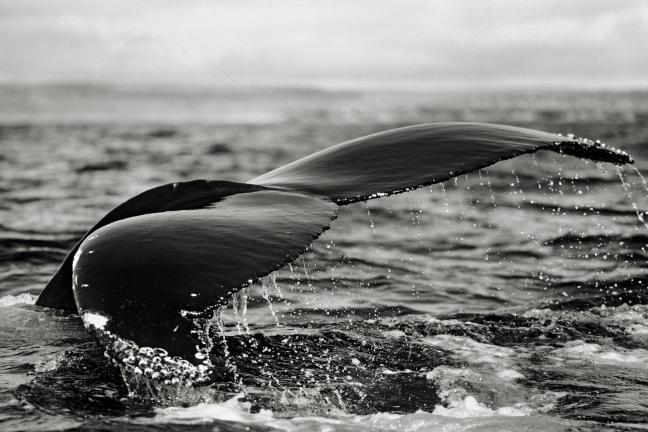



Artivism on the front page of the magazine Chasseur d’Images.

In a quarter century, this criminal and illegal hunt orchestrated by the japanese government has caused the deaths of 15,000 whales.
Artivist
“Artivism” has…
Artivism illustrates a new way of militating. Paint one’s dreams on the walls, photograph one’s demands, showcase one’s convictions… Artivism is not a typing mistake; it is indeed a form of activism in which art, in all its expressions, becomes the means used to militate. That breaking down of boundaries between two strange universes engenders progeny that is surprising and colourful, and continuously gives rise to new ideas. The troubling settings that denounce the excesses of the consumer society, artistic performances, and happenings are part of that trend.
The first appearances of artivism date back to the 1990s. It involved stencil drawings and détournement graffiti by Banksy, photos of nudes compiled in the streets of Brooklyn and taken by Spencer Tunick, and sulphurous performances by the South African plastic artist Steven Cohen.
At the antipodes of the protest routine
In artivism, culture has a political scope. It is no longer a case of speeches and tracts but creativity and originality that are at the service of ideas. Because artivism is intended to be free and accessible to all, it takes place in the street, in public places, and at festivals. Between parody and provocation, the message gets through, a period of non-violent cultural resistance…

Street art has no borders. In order to warn a large audience about the big monkeys' disappearing issue worldwide, Gilles Martin went to New York and installed posters, pastings and stencils on the walls of Brooklyn and Manhattan. Discover the portfolio here.
Orangutan prostitution !
I first heard about this true story when I did a photo report in Borneo. Disguised and shaved daily, an unfortunate female orangutan had been locked up and sexually abused for a long time in an Indonesian brothel. Nicknamed Pony, she was released thanks to a great police intervention. Later on, the local association Borneo Orangutan Survival Foundation took care of her. This unknown practice is unfortunately still in operation today in some remote brothel in Indonesia.

1 - To design this poster I took a colour photograph of a female orangutan. I shot her in her natural habitat in Borneo.
2 - The picture was then printed in black and white.
3 – I manually applied real make-up on the print : I put some red lipstick with a paintbrush on her lips and some mascara on her eyes. Then I took a picture of the whole work to get the final result (the picture was photoshopped afterwards to refine the details).
A petition against whaling in the antarctic by japan
Still today, Japan participates in the killing of whale. Indeed, five Japanese whaling ships went again to Antarctica in 2018 for their new hunt campaign. More than 330 whales were killed, 120 of whom were pregnant, according to the International Whaling Commission (IWC) report. Commanded to halt its whaling programme in March 2014 after a ruling from the International Court of Justice (ICJ), Japan is suspected of having conducted commercial whaling in disguise, claiming its programme is for “scientific research”… Despite the international moratorium, which has banned whaling since 1986, it is reported that Japan has killed some 15,000 cetaceans between 1987 and 2012, mainly in the Southern Ocean. According to the French daily Le Monde: “the new programme submitted to the International Whaling Commission intends to capture 3,996 minke whales in the Antarctic over the next twelve years, i.e. 333 each season, down from some 900 under its predecessor, which was deemed illegal.”
Pointless massacre
There is admittedly a longstanding history of whale meat consumption in Japan, which made the most of its high protein content after World War II.
But it is no longer a staple for the meal table now, to the extent that frozen stocks are auctioned off at a loss and sold on the cheap to schools and hospitals…
Refusing independent observers aboard its whaling ships, the Japanese government nevertheless continues to defend this age-old tradition and buys the support of small countries through the International Whaling Commission. Japanese fishing agencies are piling on the pressure to continue benefiting from whaling programme funds. According to some associations, certain funds earmarked for tsunami recovery were even used to subsidise whaling operations.

Street art
This stencil painting is a limited edition art print, and also available as posters for street art.
Photograph and stencil by Gilles Martin
Make a difference by speaking out to help ban whaling for good!
